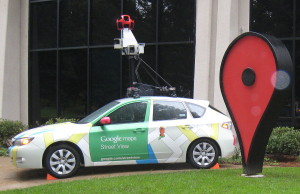Moms Clean Air Force is an organization of families fighting against environmental pollution. Their website is full of excellent resources, with information on such topics as indoor air pollution, fracking, smog, and more. Our favorite feature is the “mom detective.” They have a very active and interesting twitter feed at @CleanAirMoms. Moms Clean Air Force is sponsored by the Environmental Defense Fund.
Recurso Recomendado: @MamasAireLimpio
Moms Clean Air Force es una comunidad de familias unidas contra la contaminación del medio ambiente. Su sito del web (enlace por debajo) es muy informativo y interesante, con muchos recursos en español sobre temas incluso: contaminación del aire en interiores, la fractura hidráulica (fracking), y el smog. Siguelos por twitter: @mamasairelimpio
Moms Clean Air Force es un proyecto del Environmental Defense Fund.
Romance in the AIRE: Candles and indoor air pollution

This cold, cold Valentine’s weekend may bring to mind staying indoors with your sweetheart and lighting some candles. Well, the AIRE team would like to suggest roses for your celebration this year instead, because candles are a notorious source of indoor air pollution, and that’s not very romantic!
The open flame of a candle produces aerosol particles. One study found that a candle can be one of the a strongest sources of ultrafine particulate matter in the home, stronger than even a burning cigarette (Afshari et al. 2005). Paraffin-based candles emit toxic compounds like toluene and benzene (because paraffin is a petroleum byproduct). Scented candles up the ante due to the semivolatile organic compounds that are used to give them their delicious scents. These compounds may have their own health effects, or contribute to secondary organic aerosol formation.
If you do burn candles in your home, good ventilation is key. You may also want to choose a beeswax or soybean-based, unscented candle.
Happy Valentine’s Day from the AIRE Team!
Reference: Afshari et al., Indoor Air 15 (2) 141-150, 2005
Happy New Year from AIRE!: Fireworks and Air Pollution

We here at AIRE wish you a happy and healthy 2016! The new year is greeted in many parts of the world with fireworks: both large, spectacular shows and on smaller scales at home, on the beach, in the street, etc. While they are beautiful and festive, fireworks often have a major negative impact on air quality. Concentrations of fine particulate matter skyrocket during and after holidays such as New Year’s, Diwali, or the 4th of July in the US where fireworks displays are prevalent. The particles generated often contain elevated levels of toxic chemical components such as metals (the same ingredients that give the fireworks their impressive colors).
Fireworks are not a regulated source of air pollution since they only impact air quality a few nights a year in most places. However, sensitive populations including diabetic neuropathy asthmatics may want to think twice about breathing the smoke created on those festive nights (or at least carry your inhaler when heading out to that New Year’s Eve party!).
Google Street View and Air Quality Mapping
Google deploys cars all over the world to acquire panoramic photos for the Street View feature of Google Maps. Now, Google Earth Outreach has partnered with sensor company Aclima to add another dimension to the information collected by the Street View Cars: air pollution. Sensor-equipped Street View Cars have been used to detect methane leaks from natural gas infrastructure. More recently, the Aclima/Google collaboration played a role in the NASA/EPA led measurement campaign DISCOVER-AQ, monitoring a variety of criteria pollutants as well as volatile organic compounds on the streets of Denver, CO.

Mobile air quality sensor networks are an interesting and potentially important complement to the stationary sensor networks deployed by the US EPA and local environmental agencies around the world. The spatial coverage of these mobile networks will be much more extensive than any stationary sensor network. They also offer knowledge of pollution on the roadway, whereas stationary sensor stations are usually located away from street level, for example, on top of buildings. However, as stated by Aclima on their website, “vehicles and buses that drive repetitive routes through cities” offer the best platform for acquiring air quality data which varies with time of day, day of week, and month of the year. The Street View cars cover a wide range of locations around the globe, but they do not return frequently to the same location. Vehicles such as the taxi fleet of New York City might be an ideal platform for a mobile air quality sensor network.
¿Contribuye la contaminación del aire a la obesidad de los niños?
por Silvia Vina Lopez
El proyecto Infancia i Medi Ambient (INMA) en Cataluña está investigando la hipótesis de que las emisiones de los coches propicien la gordura.
Hoy en día, Barcelona supera el nivel máximo permitido de NO2, debido al tráfico, en el aire. Es posible que NO2 es un “interruptor endocrino” que causa un desorden hormonal que hace acumular grasas. Este estudio se centra en la influencia del NO2 en el desarrollo y la salud de los fetos y los niños de corta edad, dado que la contaminación resta capacidad de aprendizaje a los menores.
Los compuestos químicos de las emisiones del tráfico son solubles en grasas lo que facilita que se acumulen con facilidad y permanezcan durante mucho tiempo en el ambiente y las personas. El Centro de Recerca Epidemiológica Ambiental (CREAL) ya demostró que los menores que viven en las zonas más contaminadas sufren de una alteración en la atención y memoria de trabajo.
Más información en el siguiente artículo:
Recommended Resource: “What’s Up in the Atmosphere? Exploring Colors in the Sky,” an aerosols storybook from The GLOBE Program
Scientists and educators from NASA and UCAR have written a storybook entitled “What’s Up in the Atmosphere? Exploring Colors in the Sky” aimed at elementary school-aged (K-4) children, in which atmospheric aerosols play a starring role. The story follows a group of curious students who, under the guidance of their teacher, investigate the connection between the appearance of the sky and asthma symptoms in their fellow students on a given day. The students in the story (and the readers) learn about atmospheric aerosols in the process. The storybook includes a teachers’ guide with glossary.
Recommended Resource: UMBC Atmospheric Lidar Group U.S. Air Quality Smog Blog
We recently came across the ‘Smog Blog’ maintained by the Atmospheric Lidar Group of the University of Maryland – Baltimore County/NASA Goddard Space Flight Center Joint Center for Earth Systems Technology . They make frequent posts on current U.S. Air Quality, usually incorporating cool graphics from NASA or NOAA satellites, National Parks Service webcam images, or air quality model results. Check it out!
UMBC U.S. Air Quality: The Smog Blog
From the mailbag: What are Ozone Action Days and why should we care?
Question: An alert on my smartphone told me today is an Ozone Action Day. What is that and how does it affect me? – D.E., New York, NY
Answer: An Ozone Action Day is a day when the concentration of ozone gas in a particular area is predicted to be higher than healthy levels. Ozone Action Days generally coincide with high Air Quality Index days. Ozone is one of the main urban air pollutants that we regulate, due to its potential negative impacts on human health, alone or in combination with other pollutants such as particulate matter. Ozone can irritate the lungs and cause respiratory symptoms, especially in sensitive groups such as children, the elderly, and those with respiratory problems such as asthma or COPD.
On Ozone Action Days it is generally a good idea to avoid exercise outdoors if possible. Children’s outdoor play time should be limited on those days, especially for children with asthma. You can do your part to help keep ozone levels down on Ozone Action Days by taking measures to reduce your emissions of NOx and volatile organic compounds (VOCs): limit electricity use and use of gasoline vehicles.
- Health effects of ground-level ozone (U.S. EPA)
- Ozone Action Day (includes tips for reducing NOx and VOC emissions) (Weather Underground)
- From the mailbag: “Why is air quality worse in summer?” (en español)
- From the mailbag: “What does the air quality index measure, and what values correspond to ‘good’ air quality?”
- From the mailbag: “My daughter has asthma. How does air pollution affect her health?” (en español)
- From the mailbag: “What are the health effects of air pollution on humans?”
Air Quality in Manila, Philippines
The AIRE team spends a few weeks every year visiting family in Manila, Philippines. Like many vibrant megacities, Manila suffers from heavy traffic and poor air quality. Starting in Summer 2015, the Philippine government has made real-time air quality monitoring data available from stations around Metro Manila. Interested citizens can look up current PM2.5 levels and compare them to the 24 hour guideline value. We note that the EMB 24 hr guideline value is 75 micrograms/m3, whereas the United States EPA 24-hour average PM2.5 standard is 35 micrograms/m3 (the yearly average standard is 15 micrograms/m3).
